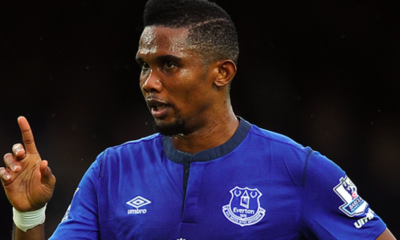Golf
What Are The Basic Rules Of Golf?

What Are The Basic Rules Of Golf?
Introduction: Understanding the Fundamentals of Golf
Golf, often referred to as the “gentleman’s game,” is a sport cherished for its blend of skill, strategy, and sportsmanship. Played on meticulously designed courses set amidst breathtaking landscapes, golf offers players a unique opportunity to test their abilities while enjoying the beauty of nature. Whether you’re a seasoned pro or a newcomer to the sport, understanding the basic rules of golf is essential for navigating the course with confidence and competence.
In this guide, we’ll explore the fundamental rules and principles that govern the game of golf. From the tee box to the putting green, each aspect of golf is governed by a set of rules designed to ensure fairness, integrity, and enjoyment for all players. Whether you’re aiming for the perfect drive off the tee or sinking a crucial putt on the final hole, a solid understanding of the rules will enhance your appreciation and enjoyment of this timeless sport.
So, grab your clubs, step onto the fairway, and let’s delve into the basic rules of golf, unlocking the secrets to success on the course and embarking on a journey of discovery, challenge, and camaraderie.
Objective: Elevating Performance to Precision
In the realm of professional golf, the objective is clear: to achieve peak performance and precision on the course. Professional golfers strive to optimize every aspect of their game, from their swing mechanics to their mental approach, to consistently deliver exceptional results. Let’s explore the core objective of professional golf in more detail:

1. Mastery of Skills: At the professional level, golfers aim to master a wide range of skills, including driving, iron play, chipping, putting, and course management. Through dedicated practice and experience, they hone their abilities to execute shots with precision and consistency under varying conditions.
2. Strategic Decision-Making: Professional golfers employ strategic decision-making to navigate the course effectively and capitalize on scoring opportunities. They assess factors such as wind direction, course layout, hazards, and pin placements to make informed decisions on shot selection and course management.
3. Mental Resilience: Mental resilience is crucial for success in professional golf, as players face pressure-packed situations and intense competition. Golfers strive to maintain focus, confidence, and composure, overcoming challenges and setbacks with a positive mindset and unwavering determination.
4. Pursuit of Excellence: Professional golfers are driven by a relentless pursuit of excellence, continuously seeking ways to improve and elevate their performance to the highest standards. They embrace a growth mindset, setting ambitious goals and pushing the boundaries of their abilities in pursuit of greatness.
5. Competitive Achievement: Ultimately, the objective of professional golf is to achieve competitive success, whether it’s winning major championships, earning world rankings, securing tour victories, or representing one’s country in prestigious events. Professional golfers strive to leave their mark on the sport and etch their names in the annals of golfing history.
6. Inspiring Fans: Professional golfers also aim to inspire and captivate fans with their skill, sportsmanship, and passion for the game. Through their performances on the course and their conduct off it, they serve as role models and ambassadors for the sport, fostering a love of golf and encouraging participation among enthusiasts of all ages.
In essence, the objective of professional golf transcends mere competition—it embodies a quest for excellence, a test of skill and character, and a celebration of the enduring allure of the game. By embracing these principles, professional golfers epitomize the essence of golf as a sport and a pursuit of excellence.
Professional Golf Equipment: Tools of the Trade for Elite Performance
Golf is a sport that requires specialized equipment designed to help players effectively navigate the course and execute their shots with precision. From clubs to balls and other accessories, having the right equipment is essential for success on the golf course. Let’s explore the key components of golf equipment:

1. Golf Clubs:
- Driver (1-Wood): The driver is the longest club in the bag and is used primarily for tee shots on long holes. It features a large head and a long shaft to maximize distance off the tee.
- Woods: Woods, including fairway woods and hybrids, are used for longer shots from the fairway or rough. They feature a larger head and lower loft compared to irons, making them ideal for distance shots.
- Irons: Irons are used for a variety of shots, including approach shots to the green and shots from the fairway or rough. They come in various numbered clubs, with lower numbers representing longer irons and higher numbers representing shorter irons.
- Wedges: Wedges are specialized irons designed for shots around the green and from bunkers. Common wedges include the pitching wedge, sand wedge, and lob wedge.
- Putter: The putter is used for shots on the putting green, with the goal of rolling the ball into the hole. Putters come in various shapes and designs to suit different putting styles.
2. Golf Balls:
- Golf balls are designed to maximize distance, accuracy, and control. They feature dimples on the surface to reduce drag and optimize flight characteristics. Golf balls vary in construction, compression, and spin rate, allowing players to choose a ball that suits their playing style and preferences.
3. Golf Bag:
- A golf bag is used to carry and transport clubs, balls, and other accessories around the course. Golf bags come in various styles, including stand bags, cart bags, and staff bags, each offering different features and storage options.
4. Accessories:
- Golf Gloves: Golf gloves provide grip and control while swinging the club and help prevent blisters and discomfort.
- Golf Shoes: Golf shoes feature spiked or spikeless soles to provide traction and stability during the swing and while walking the course.
- Golf Tees: Golf tees are used to elevate the ball for tee shots, providing a stable base for optimal contact with the club.
- Golf Towel: A golf towel is used to clean clubs, balls, and hands during play, helping to maintain equipment and performance.
- Range Finders/GPS Devices: Range finders and GPS devices provide accurate distance measurements to targets on the course, helping players select the right club and make informed decisions.
Having the right equipment is essential for success in golf, as it enables players to maximize their performance and enjoyment on the course. Whether you’re a beginner or a seasoned pro, investing in quality equipment tailored to your needs can make a significant difference in your game.
The Golf Course: A Golfer’s Playground
The golf course serves as the canvas upon which the game of golf is played, offering players a meticulously designed landscape filled with challenges, beauty, and strategic opportunities. From lush fairways to undulating greens, every aspect of the course is carefully crafted to provide an unforgettable golfing experience. Let’s explore the key elements of a golf course:

1. Holes: A standard golf course consists of 18 holes, each varying in length, layout, and difficulty. Each hole presents its own unique set of challenges, requiring players to adapt their strategy and shot selection accordingly.
2. Tee Box: The tee box is the designated area from which players begin each hole. It features markers indicating where players can tee up their ball and start their round. Tee boxes come in different sizes and positions, allowing players of varying skill levels to choose their starting point based on difficulty.
3. Fairways: Fairways are the well-manicured, closely mown areas of grass that lead from the tee box to the green. They provide players with a clear path to the hole and are ideal for long, accurate shots. Fairways may feature slopes, undulations, and strategic bunkers, adding complexity to the game.
4. Rough: The rough is the longer, thicker grass that borders the fairways and surrounds hazards on the course. Balls that land in the rough can be more challenging to hit cleanly and accurately, requiring players to adjust their strategy and club selection accordingly.
5. Hazards: Hazards are obstacles on the course that pose challenges to players and penalize wayward shots. Common hazards include bunkers (sand traps), water hazards (lakes, ponds, streams), and out-of-bounds areas (marked boundaries beyond which play is not allowed). Negotiating hazards requires careful planning and execution to avoid costly mistakes.
6. Greens: Greens are the finely groomed, smooth surfaces surrounding the hole where players putt to complete each hole. Greens are typically the most closely maintained areas of the course, offering a consistent surface for putting and requiring delicate touch and precision to navigate successfully.
7. Flagstick: The flagstick is a tall, slender pole with a flag that marks the location of the hole on the green. Players use the flagstick as a reference point when approaching the green and putting. During play, the flagstick must be removed from the hole to allow players to putt.
8. Course Layout: Golf courses are meticulously designed to provide a diverse range of challenges and playing experiences. Course architects strategically position hazards, bunkers, and other features to test players’ skills and decision-making abilities while maximizing the course’s natural beauty and landscape.
In summary, the golf course is a dynamic and captivating environment that sets the stage for the game of golf. With its combination of natural beauty, strategic design, and challenging features, the golf course offers players of all skill levels an opportunity to test their abilities, enjoy the outdoors, and immerse themselves in the timeless pursuit of the perfect round.
Golf Etiquette: The Code of Conduct on the Course
Golf etiquette encompasses a set of unwritten rules and customs that govern behavior and conduct on the golf course. Rooted in tradition and sportsmanship, observing proper etiquette is essential for fostering a respectful and enjoyable environment for all players. Let’s explore the key principles of golf etiquette:
1. Respect for Others:
- Respect for fellow players, course staff, and spectators is paramount in golf. Players should refrain from disruptive behavior, loud noises, and unnecessary distractions that may interfere with others’ concentration or enjoyment of the game.
- Players should also adhere to a code of silence and refrain from talking, moving, or making noise while others are preparing to swing or putt.
2. Pace of Play:
- Maintaining an appropriate pace of play is essential for ensuring that all players can enjoy a round of golf in a timely manner. Players should keep up with the group ahead of them and be ready to play when it is their turn.
- Players should avoid unnecessary delays, such as excessive practice swings, searching for lost balls, or taking too long to line up shots. If a group falls behind, they should allow faster groups to play through.
3. Care for the Course:
- Golfers should treat the course with respect and care, repairing divots, ball marks, and bunkers as they play. Players should also avoid driving carts on tee boxes, greens, or other designated areas where damage may occur.
- Golfers should adhere to any course-specific rules or regulations regarding cart paths, designated areas, and environmental conservation efforts.
4. Honesty and Integrity:
- Golf is a game of honesty and integrity, and players are expected to uphold the highest standards of sportsmanship and fair play. This includes accurately reporting scores, penalties, and violations of the rules, even if it results in a disadvantage to oneself.
- Players should not attempt to gain an unfair advantage by altering scores, improving lies, or interfering with the play of others.
5. Dress Code:
- Many golf courses have specific dress codes that dictate appropriate attire for players. While dress codes vary by course, common guidelines include wearing collared shirts, tailored shorts or pants, and golf shoes with soft spikes.
- Players should familiarize themselves with the dress code of the course they are playing and ensure that their attire is respectful and in compliance with the rules.
By adhering to these principles of golf etiquette, players can contribute to a positive and enjoyable experience for themselves and others on the course. Golf etiquette promotes sportsmanship, camaraderie, and mutual respect, enhancing the overall enjoyment of the game for everyone involved.
Types of Play in Golf: Exploring Different Formats for the Game
Golf offers a variety of playing formats that cater to different skill levels, preferences, and occasions. From individual stroke play to team competitions, each format presents unique challenges and opportunities for players to showcase their abilities and enjoy the game. Let’s delve into some of the most common types of play in golf:
1. Stroke Play:
- Stroke play, also known as medal play, is the most common format of golf, where players compete individually to complete each hole in the fewest number of strokes possible. The player with the lowest total score at the end of the round is declared the winner.
2. Match Play:
- Match play is a format where players compete head-to-head against each other on a hole-by-hole basis. The player or team with the lowest score on each hole wins that hole, and the match is won by the player or team that wins the most holes.
- Match play encourages strategic decision-making and aggressive play, as players aim to win individual holes rather than focus solely on their overall score.
3. Stableford:
- Stableford is a scoring system designed to accommodate players of varying skill levels by awarding points based on the number of strokes taken relative to par on each hole. Players earn points for scores below par (birdies, eagles) and deduct points for scores above par (bogeys, double bogeys).
- The player with the highest total points at the end of the round is declared the winner. Stableford scoring allows players to compete against the course rather than against each other directly.
4. Scramble:
- Scramble is a team-based format where players work together to achieve the lowest possible score on each hole. Each player tees off, and the team selects the best tee shot. All players then play their next shots from that location, continuing until the ball is holed.
- Scramble promotes teamwork, camaraderie, and strategic planning, as players collaborate to navigate the course efficiently and effectively.
5. Best Ball (Four-Ball):
- Best ball, also known as four-ball, is a team format where players compete in pairs, with each player playing their own ball throughout the round. The team’s score on each hole is determined by the lowest score of the two players.
- Best ball encourages friendly competition and allows players to focus on their individual performance while contributing to the team’s overall success.
6. Skins:
- Skins is a betting game where players compete for individual holes rather than for overall scores. Each hole is worth a predetermined amount of money or points (a “skin”), which is awarded to the player with the lowest score on that hole.
- If two or more players tie for the lowest score, the skin carries over to the next hole, increasing the stakes for subsequent play.
These are just a few of the many types of play in golf, each offering its own unique challenges, strategies, and rewards. Whether competing in a formal tournament or enjoying a casual round with friends, exploring different formats adds variety and excitement to the game of golf.
Professional Golf: The Pinnacle of the Game
Professional golf represents the highest level of competition in the sport, where elite athletes from around the world showcase their skills and compete for prestigious titles, lucrative prize money, and the admiration of fans worldwide. Let’s explore the world of professional golf and what sets it apart:
1. Tours:
- Professional golf is organized into various tours, each hosting a series of tournaments throughout the year. The most prominent tours include:
- PGA Tour: The PGA Tour is the premier men’s professional golf tour in the world, featuring top players from around the globe competing in events across the United States and internationally.
- LPGA Tour: The LPGA Tour is the premier women’s professional golf tour, showcasing the talents of elite female golfers in tournaments held worldwide.
- European Tour: The European Tour hosts tournaments primarily in Europe but also includes events in other regions, attracting top players from across Europe and beyond.
- PGA Tour Champions: The PGA Tour Champions is a senior tour for professional golfers aged 50 and older, featuring former PGA Tour players and other golfing legends.
2. Major Championships:
- Major championships are the most prestigious events in professional golf, offering significant prize money, global recognition, and a place in golfing history. The four major championships for men are:
- The Masters Tournament
- The U.S. Open
- The Open Championship (British Open)
- The PGA Championship
- Women’s golf also has major championships, including the ANA Inspiration, U.S. Women’s Open, Women’s PGA Championship, and Women’s British Open.
3. Professional Golfers:
- Professional golfers are highly skilled athletes who dedicate their lives to mastering the intricacies of the game. They possess exceptional talent, technical proficiency, physical fitness, and mental resilience, allowing them to compete at the highest level.
- Professional golfers often compete in a rigorous schedule of tournaments throughout the year, traveling extensively and facing intense competition from their peers.
4. Prize Money and Sponsorships:
- Professional golf offers significant financial rewards for successful players, with prize purses ranging from thousands to millions of dollars in major tournaments. In addition to prize money, top golfers also earn income through endorsements, sponsorships, appearance fees, and other commercial opportunities.
5. Global Reach:
- Professional golf has a truly global reach, with tournaments held in countries around the world and players representing diverse backgrounds and nationalities. The sport’s international appeal contributes to its popularity and fan base across continents.
6. Legacy and Tradition:
- Professional golf is steeped in tradition and history, with iconic tournaments, legendary players, and memorable moments etched into the annals of the sport. From the timeless allure of Augusta National to the drama of final-round showdowns, professional golf captivates audiences with its rich heritage and enduring legacy.
Professional golf embodies the pinnacle of the sport, showcasing the extraordinary talent, dedication, and passion of its participants. Whether competing for major titles, climbing the world rankings, or inspiring future generations, professional golfers serve as ambassadors for the game, perpetuating its timeless appeal and global significance.
Conclusion
In conclusion, professional golf represents the pinnacle of the sport, where elite athletes showcase their skills, resilience, and passion on the world stage. From mastering the intricacies of the game to embracing the mental and physical demands of competition, professional golfers embody the pursuit of excellence in every aspect of their craft.
As they navigate the challenges of the course and inspire fans with their performances, they uphold the timeless values of sportsmanship, integrity, and determination that define the essence of golf. Through their unwavering dedication and unwavering pursuit of greatness, professional golfers continue to elevate the sport to new heights, leaving an indelible mark on the landscape of golfing history.

Golf
Justin Thomas Net Worth: Unveiling the Wealth of a Golfing Prodigy

Justin Thomas Net Worth: Unveiling the Wealth of a Golfing Prodigy
Justin Thomas, an elite professional golfer, has made a significant mark in the world of golf with his impressive achievements and growing financial success. This article provides an in-depth analysis of Justin Thomas’s net worth, exploring his career milestones, endorsement deals, and personal investments. We aim to offer a comprehensive view of how Thomas has accumulated his wealth and what factors contribute to his financial standing.
Early Life and Career Beginnings
The Early Years
Justin Thomas was born on April 29, 1993, in Louisville, Kentucky. Growing up in a family with a strong golfing background, Thomas was introduced to the sport at a young age. His father, Mike Thomas, a PGA professional, played a crucial role in shaping his early interest in golf.
Thomas attended St. Xavier High School, where he showcased his golfing talent by winning several junior tournaments. His success in high school golf laid the foundation for his future career as a professional golfer.
Collegiate Achievements
After high school, Justin Thomas enrolled at the University of Alabama, where he played college golf under the guidance of Coach Jay Seawell. During his time at Alabama, Thomas achieved notable success, including winning the 2012 Haskins Award, given to the best college golfer in the country.
His collegiate career was marked by several victories and a national championship, which set the stage for his transition to professional golf.
Turning Professional
Professional Debut
In 2013, Justin Thomas turned professional, joining the PGA Tour after a successful stint on the Web.com Tour. His debut season was promising, with several top-10 finishes that indicated his potential to excel at the highest level of the sport.
Breakthrough Victories
Thomas’s breakthrough came in 2015 when he won his first PGA Tour event at the CIMB Classic. This victory was a significant milestone in his career, demonstrating his ability to compete and succeed on the global stage.
Since then, Thomas has accumulated multiple victories on the PGA Tour, including major championships and prestigious tournaments. His consistent performance and impressive skills have cemented his status as one of the top golfers in the world.
Career Achievements
Major Championships
Justin Thomas’s career has been highlighted by several major victories. One of his most significant achievements was winning the PGA Championship in 2017. This victory not only earned him a substantial prize but also solidified his reputation as a top golfer.
Thomas’s victory at the PGA Championship was a testament to his skill and determination. It marked a turning point in his career, elevating him to the upper echelons of professional golf.
Other Notable Wins
In addition to his major championship victory, Thomas has accumulated several other notable wins on the PGA Tour. Some of his key victories include:
- 2016 SBS Tournament of Champions
- 2019 The Players Championship
- 2020 WGC-FedEx St. Jude Invitational
Each of these victories has contributed to Thomas’s growing net worth and established him as a prominent figure in the world of golf.
Endorsements and Sponsorships
Lucrative Endorsement Deals
Justin Thomas’s success on the golf course has attracted several high-profile endorsements and sponsorships. Companies such as Titleist, Rolex, and Citi have partnered with Thomas, providing him with lucrative endorsement deals.
Titleist has been a significant sponsor, providing Thomas with equipment and apparel that enhance his performance on the course. Rolex and Citi have also contributed to his financial success through endorsement deals that highlight his status as a top golfer.
Impact on Net Worth
Endorsements and sponsorships play a crucial role in augmenting Justin Thomas’s net worth. The financial backing from these companies allows Thomas to focus on his game while benefiting from substantial financial rewards.
Personal Life and Investments
Family and Relationships
Justin Thomas is known for his close-knit family and strong relationships. He is engaged to his longtime girlfriend, Jillian, and the couple’s relationship is a significant aspect of Thomas’s personal life.
Real Estate and Investments
In addition to his earnings from golf and endorsements, Justin Thomas has made several strategic investments in real estate. Owning properties in prime locations contributes significantly to his overall net worth. His investments reflect a well-thought-out approach to securing his financial future beyond his golfing career.
Philanthropy and Community Involvement
Charitable Contributions
Justin Thomas is actively involved in various charitable endeavors. He supports organizations such as The Justin Thomas Foundation, which focuses on providing educational opportunities and supporting youth development programs.
Thomas’s commitment to philanthropy not only enhances his public image but also underscores his dedication to giving back to the community.
Net Worth Estimation
Financial Overview
As of 2024, Justin Thomas’s estimated net worth is approximately $50 million. This figure includes earnings from his PGA Tour victories, endorsement deals, and investments. Thomas’s financial success is a result of his exceptional skills, strategic financial management, and savvy investments.
Comparison with Peers
When compared to other professional golfers, Thomas’s net worth places him among the top earners in the sport. His achievements on the course, combined with lucrative endorsements and smart investments, contribute to his impressive financial standing.
Conclusion
Justin Thomas’s rise from a promising amateur to a top professional golfer is a testament to his talent, hard work, and strategic financial planning. His significant victories, high-profile endorsements, and strategic investments have contributed to his impressive net worth. As Thomas continues to excel on the PGA Tour and engage in philanthropic efforts, his legacy in the world of golf remains firmly established.
Frequently Asked Questions (FAQs)
How did Justin Thomas become a successful professional golfer?
Justin Thomas achieved success through his outstanding performances on the PGA Tour, including major victories and consistent play. His career was marked by several key wins, such as the 2017 PGA Championship.
What are some of Justin Thomas’s major golf achievements?
Major achievements include winning the PGA Championship in 2017, the SBS Tournament of Champions in 2016, and The Players Championship in 2019.
Which companies endorse Justin Thomas?
Justin Thomas has endorsement deals with companies such as Titleist, Rolex, and Citi, which provide him with financial backing and support.
How does Justin Thomas manage his personal life?
Justin Thomas maintains a close relationship with his family and is engaged to his longtime girlfriend. Balancing his personal life with his professional career is an important aspect of his life.
What philanthropic efforts is Justin Thomas involved in?
Justin Thomas supports various charitable organizations through The Justin Thomas Foundation, focusing on educational opportunities and youth development programs.
Golf
Webb Simpson Net Worth: The Rise of a Golfing Legend

Webb Simpson Net Worth: The Rise of a Golfing Legend
Webb Simpson, an American professional golfer, has captivated fans with his impressive skills and dedication to the sport. Known for his remarkable achievements on the PGA Tour, Simpson’s journey from a promising amateur to a celebrated professional is a testament to his hard work and talent. This comprehensive article explores Webb Simpson’s net worth, career milestones, and personal life, providing a detailed look at the factors that contribute to his financial success.
Early Life and Career Beginnings
A Promising Start
Webb Simpson was born on August 8, 1985, in Raleigh, North Carolina. Growing up in a sports-oriented family, Simpson was introduced to golf at a young age. His father, a passionate golfer himself, played a significant role in nurturing Simpson’s early interest in the sport.
Simpson attended Broughton High School, where he quickly gained recognition for his golfing prowess. His high school career was marked by several notable achievements, including winning the North Carolina High School Athletic Association 4A State Championship.
Collegiate Success
After high school, Simpson continued to hone his skills at the University of Georgia. During his time at college, he became a standout player on the college golf circuit. His success at Georgia, where he was a member of the All-American team, set the stage for his transition to professional golf.
Turning Professional
Early Professional Years
In 2008, Webb Simpson turned professional and joined the Nationwide Tour (now the Korn Ferry Tour). His performance on the tour was impressive, and he quickly gained attention for his potential. Simpson’s breakthrough came in 2011 when he secured his first PGA Tour victory at the Wyndham Championship.
Rising Through the Ranks
Simpson’s victory at the Wyndham Championship marked the beginning of a successful career. Over the years, he continued to build on this success with multiple wins and high finishes in major tournaments. His consistency and skill on the course earned him a spot among the top golfers in the world.
Career Achievements
Major Victories
Webb Simpson’s career has been highlighted by several major victories. One of his most significant achievements came in 2012 when he won the U.S. Open. This victory solidified his reputation as one of the top golfers of his generation.
Simpson’s U.S. Open win was a testament to his ability to perform under pressure. The win not only earned him substantial prize money but also elevated his status in the golfing world.
Other Notable Wins
In addition to his major victory, Simpson has accumulated several other wins on the PGA Tour. Some of his notable wins include:
- 2011 Wyndham Championship
- 2018 The Players Championship
- 2019 RSM Classic
Each of these victories has contributed to Simpson’s growing net worth and established him as a prominent figure in professional golf.
Endorsements and Sponsorships
High-Profile Endorsements
Webb Simpson’s success on the golf course has attracted several high-profile endorsements and sponsorships. Companies such as Titleist, FootJoy, and Ping have partnered with Simpson, providing him with lucrative endorsement deals.
Titleist and FootJoy have been particularly significant in Simpson’s career, offering him equipment and apparel that enhance his performance on the course. These endorsements not only contribute to Simpson’s income but also bolster his public image.
Impact on Net Worth
Endorsements and sponsorships play a crucial role in augmenting Webb Simpson’s net worth. The financial backing from these companies allows Simpson to focus on his game while benefiting from substantial financial rewards.
Personal Life and Investments
Family Life
Webb Simpson is married to his college sweetheart, Dowdie. The couple has four children together, and Simpson is known for his strong family values. Balancing his professional career with family life has been an important aspect of Simpson’s personal life.
Real Estate Investments
In addition to his earnings from golf and endorsements, Simpson has made several smart investments in real estate. Owning properties in prime locations contributes significantly to his overall net worth. His investments reflect a strategic approach to securing his financial future beyond his golfing career.
Philanthropy and Community Involvement
Charitable Contributions
Webb Simpson is actively involved in various charitable endeavors. He supports organizations such as The First Tee, which promotes golf among young people, and Operation Smile, which provides medical treatment to children in need.
Simpson’s commitment to philanthropy not only enhances his public image but also underscores his dedication to giving back to the community.
Net Worth Estimation
Financial Overview
As of 2024, Webb Simpson’s estimated net worth is approximately $25 million. This figure includes earnings from his PGA Tour victories, endorsement deals, and investments. Simpson’s financial success is a result of his hard work, skill, and strategic financial management.
Comparison with Peers
When compared to other professional golfers, Simpson’s net worth places him among the top earners in the sport. His achievements on the course, combined with lucrative endorsements and smart investments, contribute to his impressive financial standing.
Conclusion
Webb Simpson’s journey from a promising amateur to a successful professional golfer is a testament to his dedication and skill. His significant victories, high-profile endorsements, and strategic investments have contributed to his impressive net worth. As Simpson continues to excel on the PGA Tour and engage in philanthropic efforts, his legacy in the world of golf remains firmly established.
Frequently Asked Questions (FAQs)
How did Webb Simpson rise to prominence in professional golf?
Webb Simpson gained prominence through his impressive performances on the PGA Tour, including his major victory at the 2012 U.S. Open. His consistent play and multiple wins have solidified his reputation as a top golfer.
What are some of Webb Simpson’s most notable golf achievements?
Notable achievements include his victory at the 2012 U.S. Open, the 2011 Wyndham Championship, the 2018 Players Championship, and the 2019 RSM Classic.
What companies have endorsed Webb Simpson?
Webb Simpson has endorsement deals with companies such as Titleist, FootJoy, and Ping, which provide him with equipment and apparel.
How does Webb Simpson balance his professional and personal life?
Simpson balances his career with family life by maintaining strong family values and making time for his wife and four children. His personal life is important to him, and he ensures it complements his professional commitments.
What philanthropic efforts is Webb Simpson involved in?
Webb Simpson supports organizations like The First Tee and Operation Smile, contributing to causes that promote youth golf and provide medical care to children in need.
Golf
Louis Oosthuizen’s Net Worth: A Detailed Look at His Wealth

Louis Oosthuizen’s Net Worth: A Detailed Look at His Wealth
Louis Oosthuizen, a name synonymous with golfing excellence, has left an indelible mark on the sport. With a career filled with remarkable achievements, including a major championship win at the 2010 Open Championship, Oosthuizen has become one of the most respected golfers in the world. But beyond his success on the greens, many fans and followers are curious about his financial standing. In this article, we delve deep into Louis Oosthuizen’s net worth, exploring the various sources of his income, his lifestyle, and how his wealth has evolved over the years.
Early Life and Career Beginnings
Humble Beginnings in South Africa
Louis Oosthuizen was born on October 19, 1982, in Mossel Bay, South Africa. Growing up in a modest family, Oosthuizen’s journey to becoming a world-class golfer was anything but easy. His love for the game was evident from a young age, and despite financial constraints, he pursued his passion with unwavering determination.
Breaking into the Professional Golf Scene
Oosthuizen’s professional career began in 2002 when he joined the Sunshine Tour, the main professional golf tour in Southern Africa. His early years were marked by consistent performances, and by 2004, he had secured his first victory. This win was a significant milestone, as it not only boosted his confidence but also laid the foundation for his future success on the international stage.
Major Career Milestones
The 2010 Open Championship
The pinnacle of Louis Oosthuizen’s career came in 2010 when he won The Open Championship at St Andrews. This victory catapulted him to global fame and significantly impacted his net worth. Oosthuizen’s performance was nothing short of spectacular, as he led the tournament from start to finish, eventually winning by a comfortable margin of seven strokes.
Consistent Performances in Major Championships
Since his triumph at The Open, Oosthuizen has continued to perform well in major championships. He has finished as a runner-up in all four majors, including the Masters, U.S. Open, and PGA Championship. These consistent top-tier finishes have not only solidified his reputation as a world-class golfer but have also contributed significantly to his earnings.
Louis Oosthuizen’s Earnings and Endorsements
Prize Money from Tournaments
One of the primary sources of Louis Oosthuizen’s net worth is the prize money he has earned from various tournaments. Over the years, his consistent performances have ensured a steady flow of income. As of 2024, his career earnings from professional golf tournaments alone are estimated to be in the millions.
Lucrative Endorsement Deals
Apart from his earnings on the golf course, Oosthuizen has also secured several lucrative endorsement deals. Companies such as Ping, Titleist, and FootJoy have partnered with him, recognizing his value as a brand ambassador. These endorsements have not only increased his income but have also played a crucial role in enhancing his global brand image.
Investments and Business Ventures
Louis57 Wines
Louis Oosthuizen is not just a golfer; he is also an astute businessman. One of his most notable ventures is Louis57 Wines, a brand that reflects his passion for winemaking. Based in South Africa, Louis57 Wines has grown significantly since its inception, contributing to Oosthuizen’s overall net worth.
Real Estate Investments
In addition to his business ventures, Oosthuizen has made several smart real estate investments. He owns properties in South Africa and the United States, including a stunning estate in Florida. These properties not only serve as luxurious residences but also add to his financial portfolio.
Louis Oosthuizen’s Lifestyle and Philanthropy
A Simple Yet Luxurious Lifestyle
Despite his wealth, Louis Oosthuizen is known for leading a relatively simple life. He enjoys spending time with his family on his farm in South Africa, where he indulges in his love for agriculture. However, this simplicity does not mean he doesn’t enjoy the finer things in life. Oosthuizen’s homes, cars, and lifestyle choices reflect a man who appreciates luxury, albeit in a modest way.
Philanthropic Efforts
Oosthuizen is also deeply committed to giving back to the community. Through his Louis Oosthuizen Junior Golf Academy, he supports young and aspiring golfers in South Africa. His philanthropic efforts extend beyond golf, as he is involved in various charitable initiatives aimed at improving the lives of underprivileged communities.
Comparing Louis Oosthuizen’s Net Worth with Other Golfers
Oosthuizen vs. Ernie Els
When comparing Louis Oosthuizen’s net worth to other South African golfing legends like Ernie Els, it’s clear that both have made significant contributions to the sport. While Els’ net worth is higher, Oosthuizen’s steady growth in earnings and investments indicates that he is on a similar trajectory.
HGlobal Comparisons
On a global scale, Oosthuizen’s net worth may not rival the likes of Tiger Woods or Phil Mickelson, but it is still substantial. His prudent financial decisions, coupled with his success on the course, have ensured that he remains one of the wealthiest golfers in the world.
The Future of Louis Oosthuizen’s Net Worth
Upcoming Tournaments and Potential Earnings
As Oosthuizen continues to compete at the highest level, there is no doubt that his net worth will keep growing. His participation in upcoming tournaments presents opportunities for further earnings, both in terms of prize money and endorsement deals.
Expanding Business Ventures
In addition to his golfing career, Oosthuizen’s business ventures are likely to expand. With the success of Louis57 Wines and his real estate investments, it’s expected that he will continue to diversify his income streams, further increasing his net worth.
Conclusion
Louis Oosthuizen’s journey from a small town in South Africa to becoming one of the wealthiest golfers in the world is nothing short of inspirational. His net worth is a testament to his hard work, dedication, and smart financial decisions. As he continues to compete and grow his business ventures, there’s no doubt that Oosthuizen’s financial future looks incredibly bright.
Frequently Asked Questions (FAQs)
What is Louis Oosthuizen’s current net worth?
As of 2024, Louis Oosthuizen’s net worth is estimated to be around $40 million. This figure includes his earnings from golf tournaments, endorsements, business ventures, and real estate investments.
How did Louis Oosthuizen make his fortune?
Louis Oosthuizen made his fortune through a combination of prize money from professional golf tournaments, lucrative endorsement deals, and smart investments in businesses like Louis57 Wines and real estate.
Does Louis Oosthuizen have any other business ventures?
Yes, in addition to his golf career, Louis Oosthuizen owns Louis57 Wines and has made several real estate investments. These ventures have contributed significantly to his net worth.
How does Louis Oosthuizen spend his money?
Louis Oosthuizen leads a relatively simple life, with a focus on family and agriculture. However, he also enjoys the luxuries of life, owning properties in South Africa and the United States. He is also actively involved in philanthropy, particularly in supporting young golfers.
What are Louis Oosthuizen’s plans for the future?
Louis Oosthuizen plans to continue competing in professional golf tournaments while expanding his business ventures. His focus remains on growing his brand, increasing his net worth, and giving back to the community through his philanthropic efforts.
-

 NBA5 months ago
NBA5 months agoLaMelo Ball Net Worth: A Comprehensive Look at the NBA Star’s Financial Empire
-

 Football6 months ago
Football6 months agoEuro 2024: Alvaro Morata Speaks Out About ‘No Respect’ in Spain
-

 Football7 months ago
Football7 months agoMeet the World Football Celebrities and Their Stories
-

 Game6 months ago
Game6 months agoThe Ultimate Guide to General Multi-Sport Events
-

 Football7 months ago
Football7 months agoSamuel Eto’o: Legendary Cameroonian Soccer Star’s Career
-

 Football6 months ago
Football6 months agoRonaldo’s Business Ventures and Investments (CR7 Brand)
-

 Wrestling3 months ago
Wrestling3 months agoJey Uso Biography and Net Worth: The Rise of a WWE Superstar
-

 Wrestling4 months ago
Wrestling4 months agoKevin Owens: The Prizefighter’s Rise to Fame and Fortune



